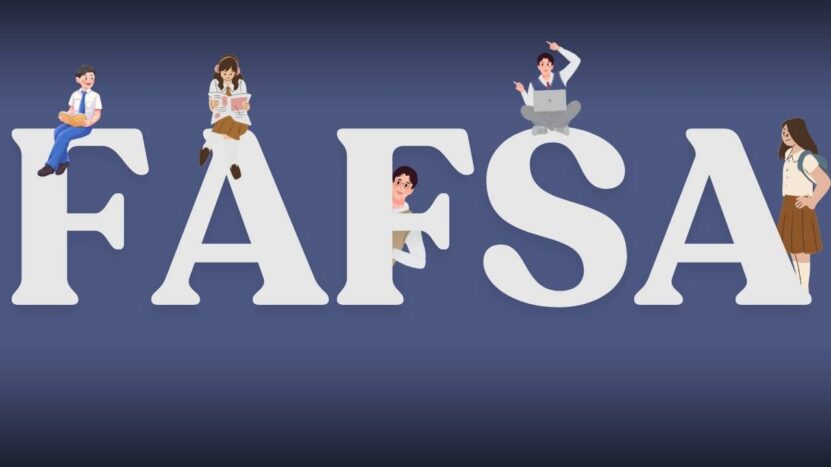
Share Post:
Filing the FAFSA opens the door to real financial support. Students who submit it on time unlock access to grants, low-interest loans, scholarships, and work-study jobs. Too many skip it and leave thousands of dollars untouched.
Colleges, states, and the federal government rely on FAFSA data to decide who gets help and how much. The 2025 version is easier, faster, and designed to get more students across the finish line.
The new FAFSA form affects timelines, eligibility, and award availability. Delays or mistakes could cut your aid. Filing early matters. Understanding how FAFSA works and why it matters can make or break your financial plan for college.
Explore the key reasons why every eligible student should file the FAFSA in 2025.
Key Insights
- FAFSA gives access to grants, federal loans, scholarships, and work-study jobs.
- Early filing increases chances for more aid and faster award letters.
Federal Grants That Never Require Repayment
Federal grants provide financial support that never requires repayment. The Pell Grant stands at the center. It supports students with significant financial need.
The amount awarded depends on income, family size, and enrollment status.
Pell Grant Explained
The Pell Grant can offer over $7,000 per year. Only undergraduates qualify.
Filing the FAFSA is the only way to access it. No separate application is required. Eligibility resets each year based on updated financial information.
Other Federal Grant Options
- FSEOG: Reserved for students with the greatest financial need
- TEACH Grant: Supports future educators who agree to teach in high-need fields
- Iraq and Afghanistan Service Grant: For students who lost a parent due to military service
Low-Interest Federal Student Loans with Flexible Terms

Filing the FAFSA also opens access to federal student loans. Repayment plans adjust to your income. Interest may be subsidized during school years, depending on your eligibility.
Direct Subsidized Loans
The government pays the interest while you are in school at least half-time. Repayment begins after graduation or if enrollment drops below half-time.
Direct Unsubsidized Loans
Both undergraduate and graduate students may qualify. Interest starts building immediately, even during school.
Still, the interest rates remain lower than most private options.
Safer Than Private Loans
- Deferment and forbearance in times of hardship
- Income-driven repayment plans
- Loan forgiveness for public service workers
Work-Study Programs That Pay You to Learn and Earn

The income can cover tuition, books, transportation, or personal expenses. Work-study programs create a balance between education and income.
What Work-Study Offers
Federal work-study jobs are part-time and often located on campus. The positions may align with your major or career goals.
Employers understand your school schedule. Hours remain flexible. Pay is at least minimum wage, sometimes higher.
Benefits Beyond the Paycheck
Students in work-study roles gain real job experience. This can strengthen your resume. Many positions build skills in research, communication, tutoring, or technical fields. You stay engaged on campus and connected to mentors.
Who Qualifies
Only students who show financial need qualify for work-study. FAFSA results determine eligibility. Schools with limited funds prioritize early applicants. Waiting too long to file may result in missing out, even if you qualify.
State and College Aid That Complements Federal Support

Many states and colleges use the same application to award their own aid. That includes grants, merit scholarships, tuition waivers, and institutional loans. Some of these are even more generous than federal options.
How States Use FAFSA
State agencies often set their own deadlines. Many offer need-based grants to residents attending in-state schools. Some provide automatic scholarship matches based on FAFSA results. Missing the state deadline means losing access.
How Colleges Use FAFSA
Colleges analyze your FAFSA to decide financial aid packages. That may include:
- Need-based scholarships
- Campus-based grants
- Special tuition discounts
New FAFSA Updates in 2025 Make It Easier Than Ever
The FAFSA form has changed in 2025. The updates aim to simplify the process and remove confusion. Fewer questions, clearer instructions, and faster processing are now part of the experience.
Many families who avoided FAFSA before now find it manageable.
Major Form Changes
The new FAFSA has reduced the number of questions. It now pulls income data directly from the IRS. That means fewer manual entries and fewer errors.
The Expected Family Contribution (EFC) is now replaced by the Student Aid Index (SAI), giving a clearer picture of aid eligibility.
More Schools, More Options
Students can now list up to 20 colleges instead of 10. That opens more chances to compare financial aid offers. You stay in control of your options. Filing one form connects you to many campuses.
Faster, Friendlier Interface
The design now fits all devices. Whether you use a phone, tablet, or computer, the application works smoothly. Guided help sections and smarter prompts reduce mistakes.
Myths That Keep Students Away from FAFSA

Many students skip FAFSA because of wrong beliefs. These myths block access to free money, low-interest loans, and work-study jobs. The truth is simple—almost every student should file, no matter their family income or future plans.
“My Family Makes Too Much”
Many believe FAFSA is only for low-income families. That is false. Some aid does depend on need, but others do not. Many middle-income families qualify for grants, loans, or scholarships based on FAFSA data.
“FAFSA Is Too Hard”
The 2025 version is shorter and clearer. The form uses IRS data and includes automatic calculations. Most students complete it in under an hour. New online tools also guide you through every step.
“I Am Not Going to College Yet”
Students unsure about college should still file. Many career schools, trade programs, and certificate paths use FAFSA for aid. Filing early keeps your options open even if plans change.
“I Missed the Deadline”
Federal deadlines run into summer, but many states and colleges close earlier. Even late filers can get some aid, but early filers get more. Never assume it is too late—file as soon as possible.
FAQs
Can I file the FAFSA without my parents’ financial information?
Yes, but only in certain cases. If you meet criteria for independent status, such as being over 24, married, a veteran, or having dependents of your own, you may not need your parents’ information. Otherwise, parental data is required for dependent students.
What happens if my financial situation changes after filing?
You can contact the financial aid office at each college to request a professional judgment review. They may adjust your aid package if you experienced job loss, major medical expenses, or other significant financial changes after submitting the FAFSA.
Do undocumented students qualify for FAFSA?
Undocumented students cannot file the FAFSA for federal aid. However, some states and colleges offer separate aid programs for undocumented or DACA students. Check your state’s education agency or the college’s financial aid office for local options.
Can graduate students file the FAFSA?
Yes, graduate and professional students can file the FAFSA. They are only eligible for Direct Unsubsidized Loans and PLUS Loans, not Pell Grants or Subsidized Loans. Still, filing is required to access any federal graduate-level aid.
Is there an age limit for filing the FAFSA?
No age limit exists. Adult learners returning to school can file FAFSA and qualify for aid. Eligibility depends on financial need, enrollment status, and other criteria—not age. Many older students receive grants and loans through FAFSA.
Last Words
Filing the FAFSA in 2025 is not optional—it is essential. Students who act early open access to grants that never need repayment, low-interest federal loans, flexible work-study jobs, and aid from states and colleges. Delaying or ignoring the form can lead to lost opportunities and higher student debt.
The updated FAFSA form is faster and easier. It now works across all devices, pulls data automatically, and allows more school choices. Myths, confusion, or assumptions should never block you from securing the support you qualify for.
Take action before deadlines close.
Related Posts:
- 9 Key Benefits of Hybrid Learning for Students and Educators
- How To Play Roblox at School - Don't Get Caught!
- Why Game-Based Learning Is Key to Student Engagement…
- What Is eLearning And What Are The Benefits? (2025 Update)
- Top 12 Chrome Extensions for Nursing Students in 2025
- 10 Side Hustles for College Students to Earn Extra…












